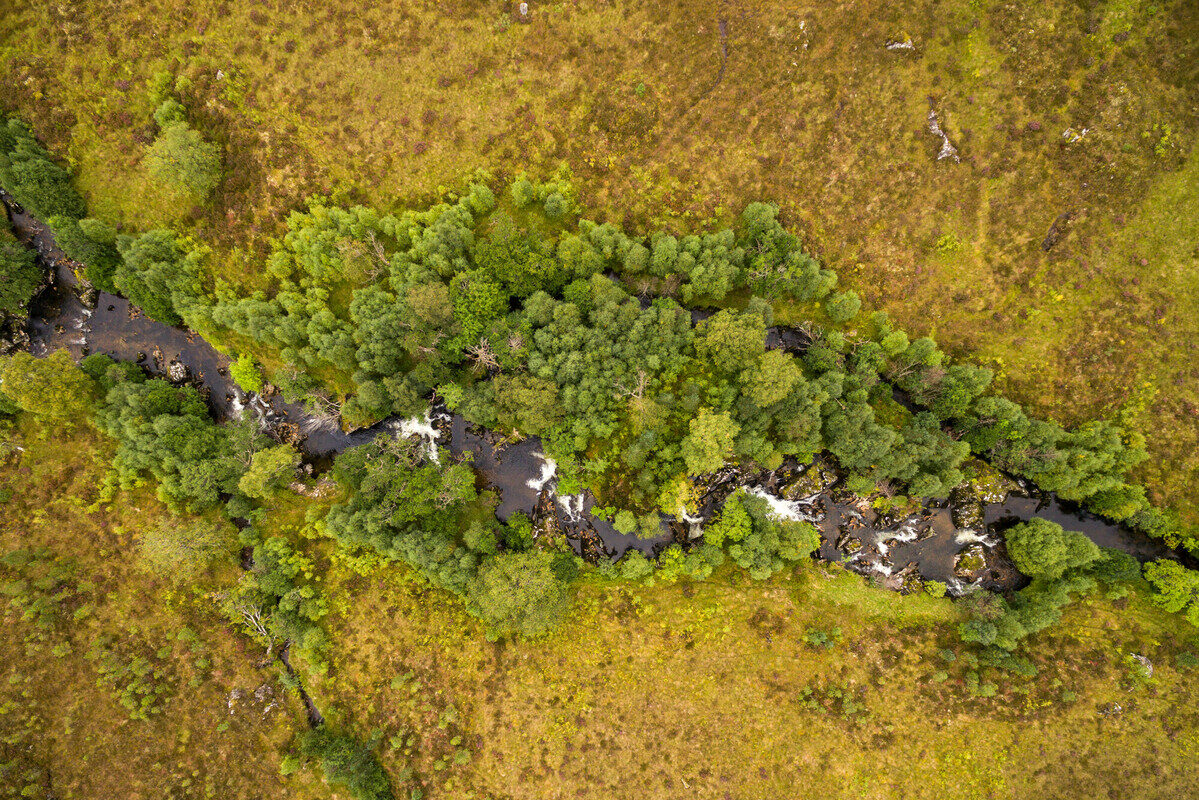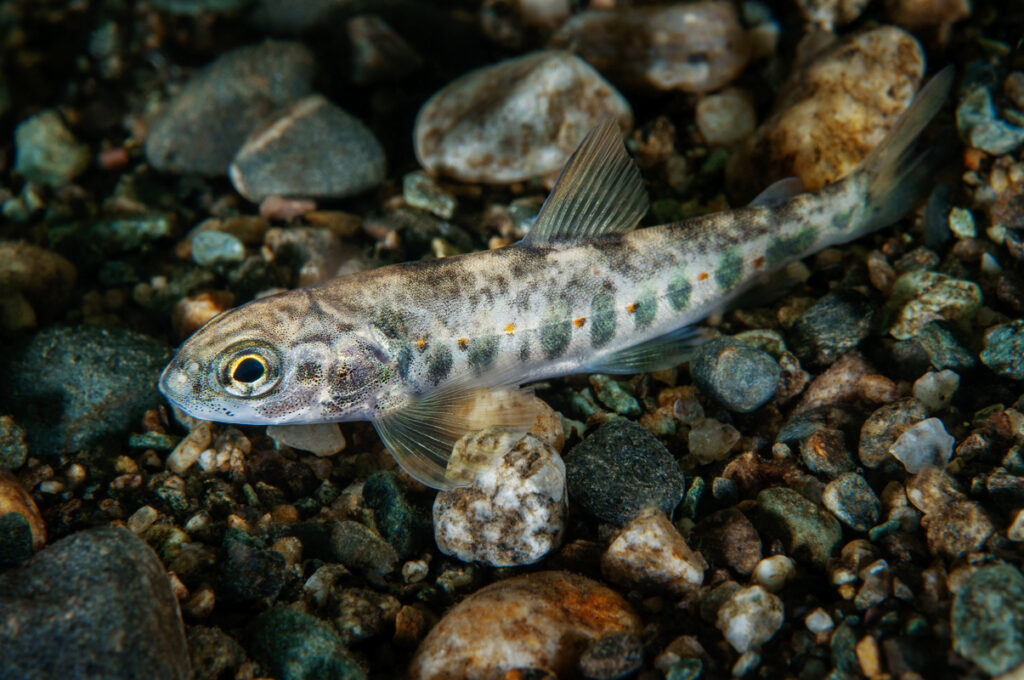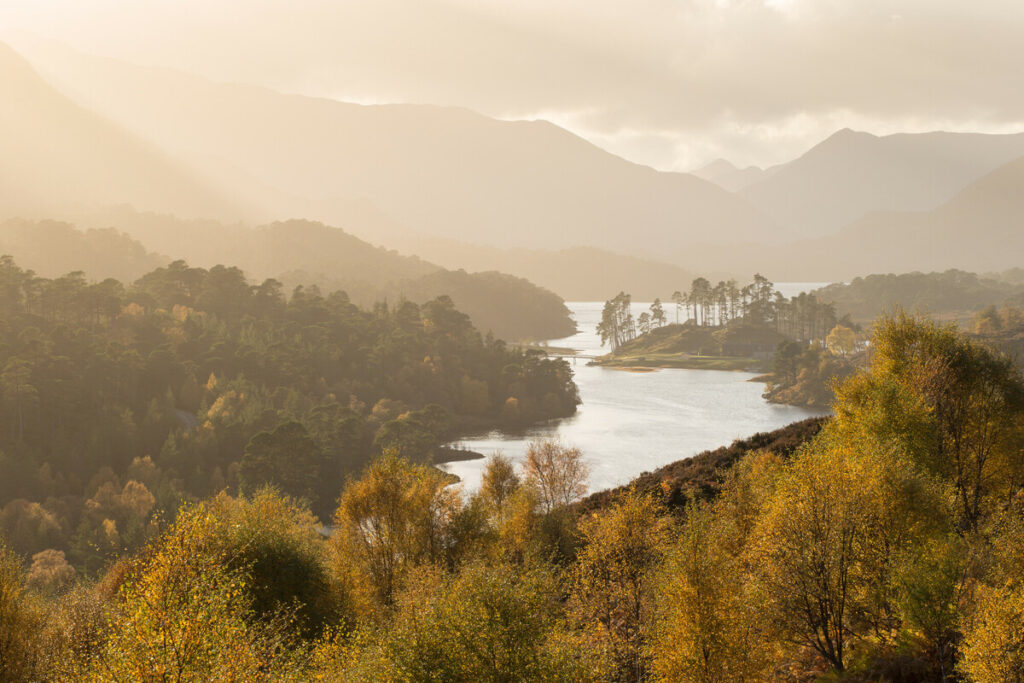The Affric Highlands rewilding team are working hard to restore river woodlands. As climate change increasingly impacts the landscape, these will connect fragments of existing native woodland, reducing flood risk, boosting fish populations, and enhancing biodiversity.

Shadier, cooler rivers
Rewilding is one of the best ways of simultaneously addressing climate change and biodiversity decline. At scale, rewilding not only boosts the amount of atmospheric carbon absorbed and stored by ecosystems, but gives landscapes and their wildlife populations far greater resilience to the unfolding impact of global warming. These benefits are exemplified by the rewilding work currently being carried out by the Affric Highlands rewilding team in Scotland
Affric Highlands is a partnership between Scottish rewilding charity Trees for Life and Rewilding Europe, with a 30-year vision to revitalise nature and provide benefits for local people. Re-establishing natural processes and restoring functionality to the relict river woods in these high headwaters forms a key part of that vision, with the current lack of tree cover along some stretches of riverbank a pressing issue. Deprived of the natural shelter that trees provide and increasingly subject to long dry spells, shallow highland streams are exposed to more heating from the sun in our warming climate. As warmer water holds less oxygen, this makes rivers increasingly ill-suited to cold-adapted species such as brown trout and Atlantic salmon.
“Water temperature is already rising in Scotland,” says Paul Greaves, the Riparian Officer attached to the Affric Highlands rewilding team. “Restoring woodland and increasing the amount of shade along rivers will help to minimise temperature increases in the future.”
Juvenile Atlantic salmon begin to struggle when water temperatures rise above 20°C. At 23°C juvenile salmon experience thermal stress and exhibit behavioural changes, ceasing to feed and abandoning territories. For a species already facing a multitude of threats, getting into hot water is the last thing it needs. A study conducted in the summer of 2018, found that around 70% of Scotland’s rivers exceeded the 23°C threshold at least once. When this year’s data is all in, it seems likely that the hot summer of 2022 will have set new unwanted records. In the River Spey, water temperatures are calculated to have risen 2-3°C in the last 100 years and current trends suggest that summers like 2018 could occur every other year by 2050.

Compelling co-benefits
Flood risk is another growing concern as Scotland’s rivers are subjected to heavier downpours in our changing climate, causing rivers to rise rapidly. Deforestation has compounded this problem, as trees both intercept water before it enters rivers and naturally facilitate water infiltration into the ground, acting to regulate the extremes of flood and drought associated with treeless catchments. Without tree cover, water sluices off the hills straight into swamped river systems. Fierce flows can scour riverbeds clean of the life they hold, washing away spawning beds and flushing juvenile salmon out of rivers altogether, leaving young fish stranded as floodwaters recede.
Given these wider challenges, a key aim of the Affric Highlands river rewilding plan is to restore trees to bare banks, allowing natural processes to come to the fore, reducing flood risk, improving water quality and sheltering more life. In Glen Affric, mixed woodland already lines parts of the lochs and the lower reaches of the River Affric, including bays skirted by deep rows of birch, rowan and aspen. Steep-sided burns have sheltered some of these trees from the grazing pressure on the surrounding moorland, creating a valuable seed source of locally adapted trees.
Where possible, natural regeneration of these surviving fragments will be promoted within fenced exclosures, protecting seedlings from grazing animals, but where sections of river extend too far from existing seed sources planting is being planned, utilising saplings grown from locally sourced seeds. For some years now, Glen Affric has seen significant planting effort along its loch shores and burns, feathering the water’s edge with a fresh green canopy and providing sources of shelter and food for wildlife.

Towards wilder rivers
Paul Greaves has seen the long-term benefits of such transformations with his own eyes. He was recently sent on a fact-finding trip to Norway, where their upland catchments were similarly deforested 50 to 100 years ago. The difference today is profound. “It was amazing to see how quickly the landscape has bounced back there,” says Paul. “What really struck me was seeing people living, farming and thriving in a richer, more wooded, more diverse landscape. To see what is possible was really inspiring.”
Increasing the size and connectivity of Affric Highlands’ riparian habitats will increase the landscape’s resilience to disturbance in this era of climate breakdown, stabilising riverbanks, slowing the flow following heavy rainfall, providing cool shade in summer and offering vital shelter. Wet woodlands create a wide variety of habitats, with rotting wood full of grub-filled cavities and potential nesting holes. Trees also lock up carbon, add nutrients to the river via falling leaves, and create dappled shade from the summer sun, while the woods themselves create a cooler microclimate. Below the water’s surface, woody debris that falls into the river shelters young fish and diversifies stream flows, creating and protecting vital spawning beds.
Want to know more?


